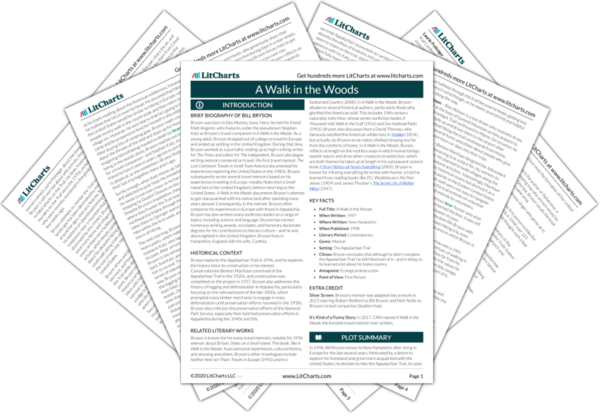Bryson thinks the lodge is beautiful from the outside, but inside, it’s unpleasantly bare. Until now, Bryson assumed that the Trail is curiously inhospitable because MacKaye didn’t get to build all the amenities that he wanted to make the Trail more accessible. Now, he realizes that even with lodges along the way, the experience might be more like army training than a pleasant adventure in the woods.
